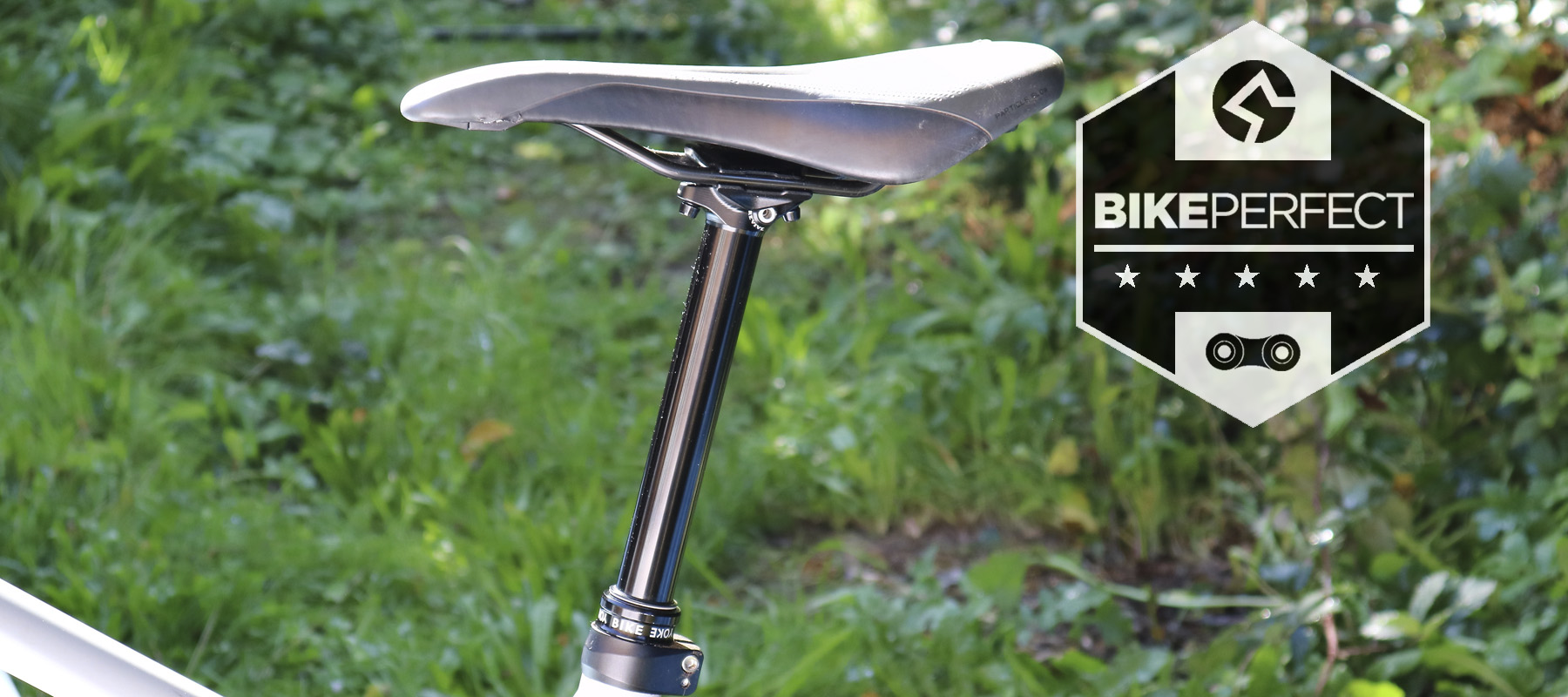Bike Perfect Verdict
With its compact head and low collar, the BikeYoke Revive 2.0 allows you to get more post in the same space. Light and smooth lever action with built-in reset function and available in a ton of sizes.
Pros
- +
Excellent build quality
- +
Low stack height
- +
Smooth action
- +
Built-in revive and return speed adjustment
- +
Four sizes, two common diameters
Cons
- -
Expensive, remote and clamp cost extra
- -
Needs resetting from time to time
- -
T-25 Torx clamp bolts are annoying
- -
Split clamp needs a hinge
Why trust BikePerfect
Like the majority of the best dropper posts, the BikeYoke Revive is hydraulic but cable-operated via a bar mount Triggy Remote. I’m testing both components but if you click on the BikeYoke website you’ll see they are sold separately.
The Triggy adds around $65 / £45 / €35 to the base price but also it only comes with a matchmaker style fitment, which means if you want to mount it independently, you’ll need the BikeYoke split bar clamp which is extra.
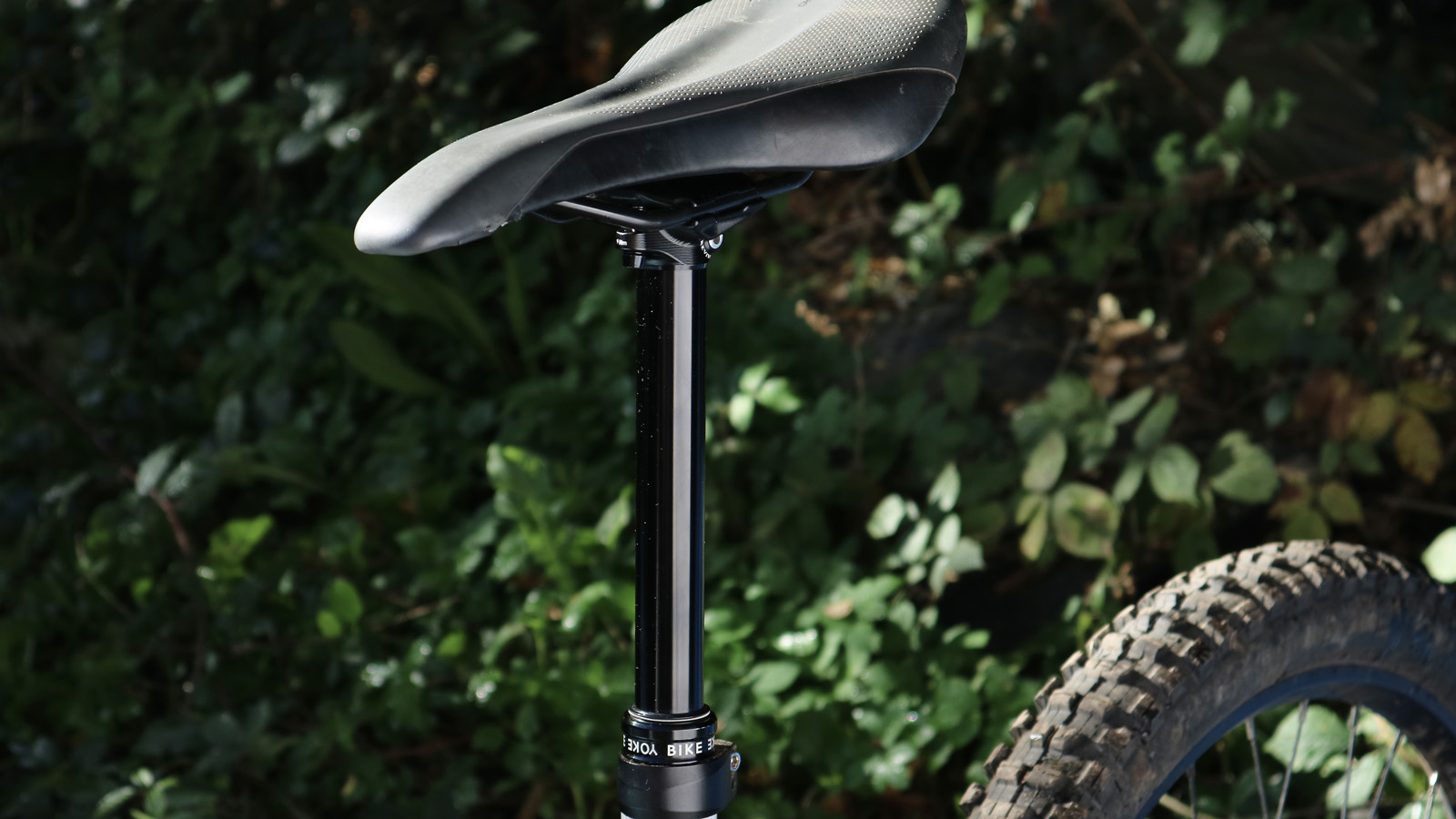
Design and specifications
In terms of architecture the BikeYoke Revive 2.0 160 has a compact clamp head, so isn’t going to stick out from under the saddle and you’ll be able to fit a relatively low-profile seat without the bolts coming into contact with the base of the shell. These are also angled slightly outwards, which is handy because they are Torx T25s and getting a regular multi-tool in there or even a standard workshop tool would normally be a faff. The head has a good range of tilt adjustment, so if you have a bike with a particularly slack seat angle you can still get the saddle level.
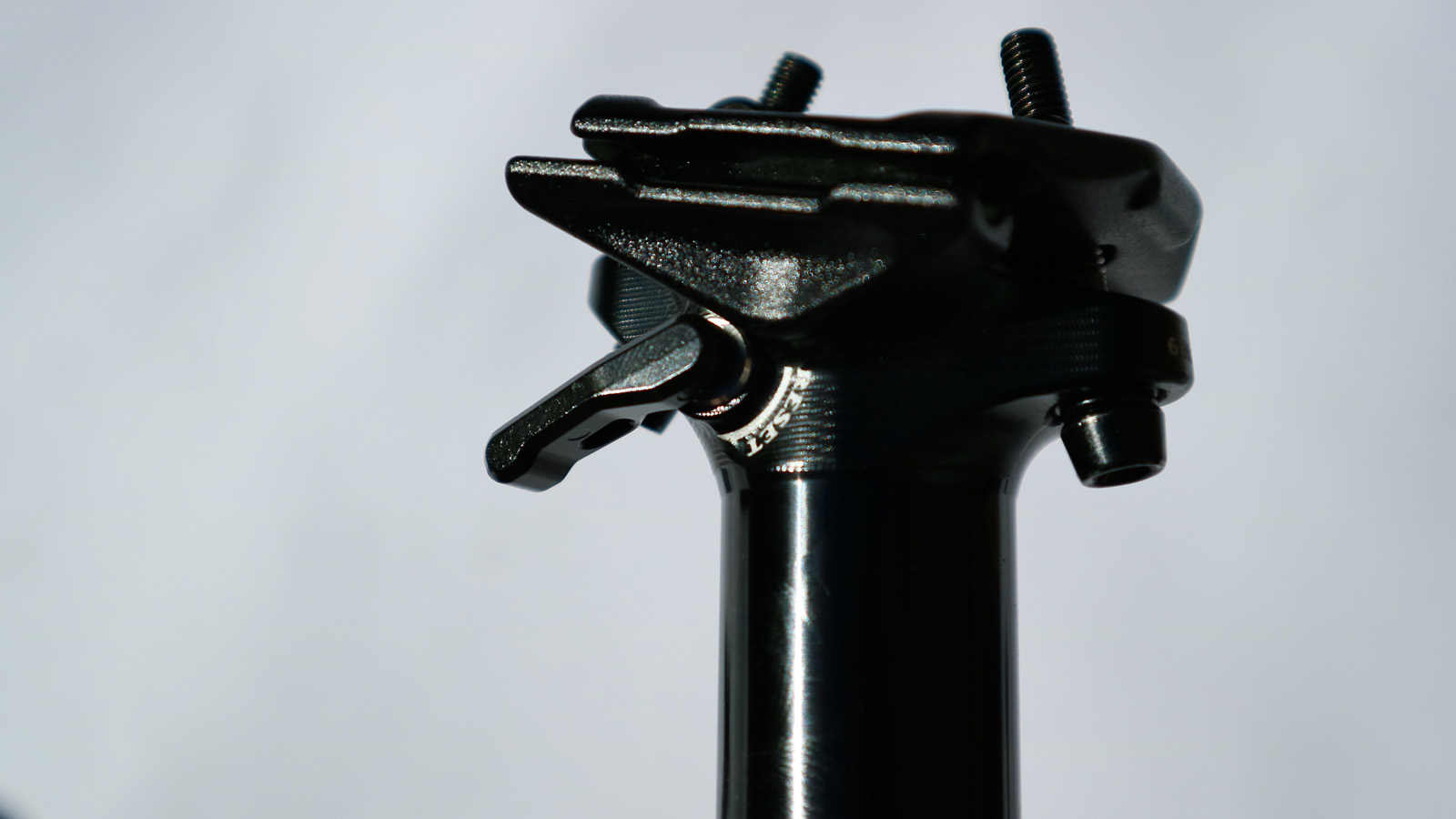
In an ideal world you want a dropper to be as short as possible with a maximum amount of drop. BikeYoke is one of the lowest in terms of travel due to the short collar, which I measured at 18mm. The shaft is hard anodized but also has a slightly ribbed finish, like a Thomson seatpost, to increase durability.
For information on Bike Perfect's testing procedures and how our scoring system works, see our how we test page.
The Triggy remote runs on a sealed cartridge bearing, which is smooth and play free. The lever has a comfortable profile and has a four-axis adjustment, meaning you can rotate it on a spigot to change the angle and also position it on one of the two Matchmaker holes. You can also buy different length levers (Alpha Long of Short) from the BikeYoke site.
The inner cable on most droppers is only clamped at one end but oddly it’s anchored at both here – there’s a (barrel style) cable anchor assembly at the bottom of the post, with a derailleur style pinch bolt at the lever. The former seems unnecessary, but at least BikeYoke include a little guide etched on the bottom of the post, so you know how long to cut it.
The BikeYoke Revive is available in 30.9 and 31.6mm sizes with either 125, 160, 185, or 213mm drop. The 160mm post tested weighs 514g, the remote is 46g and you can add another 70-80g for the inner and outer cables.
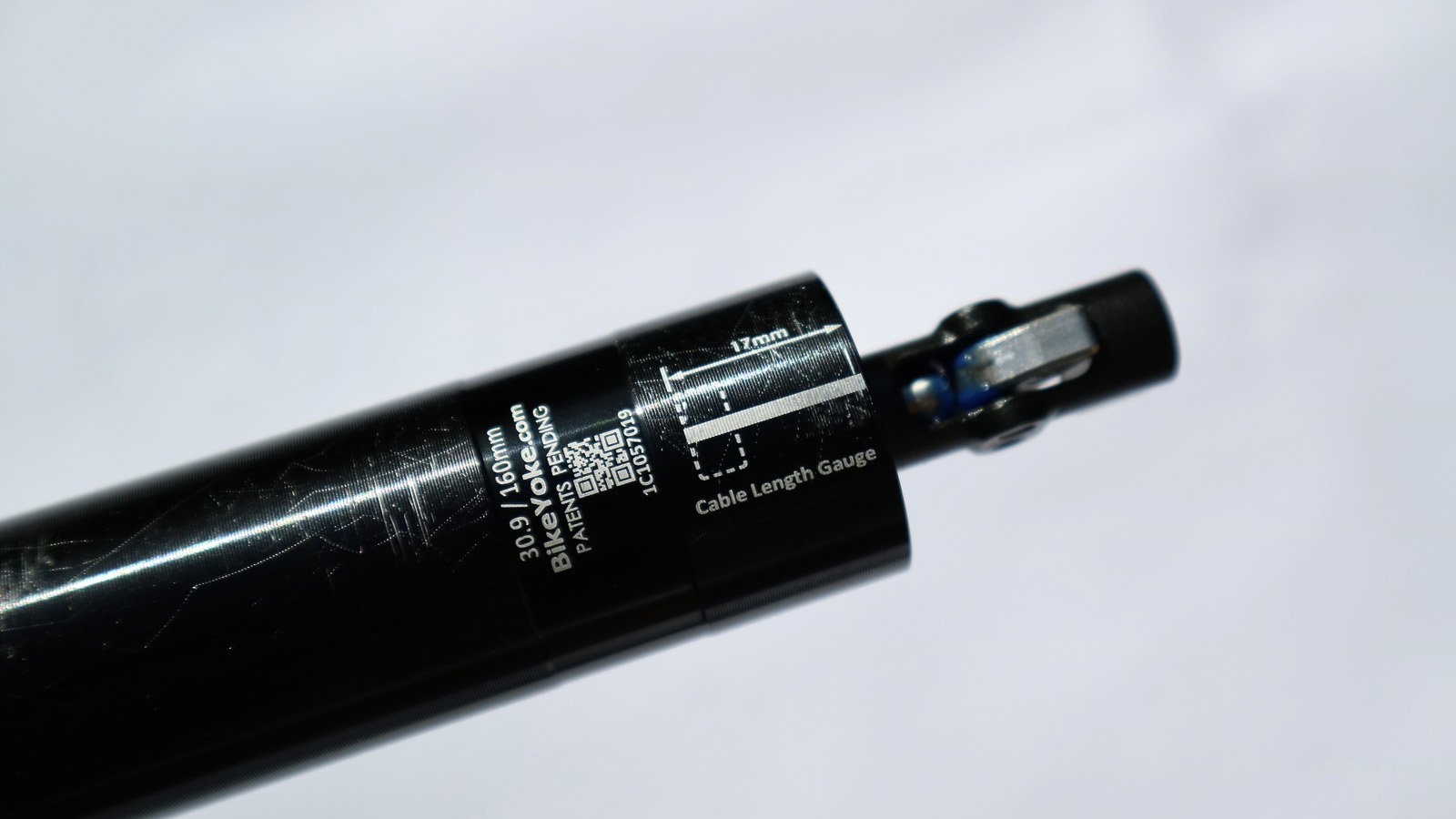
Performance
The first thing I noticed about the BikeYoke Revive 2.0 160 is there’s virtually zero play in the shaft and it’s still like that after four months of use. It also has an incredibly plush action, and this is because it uses a slightly different internal design. Most have an IFP (Internal Floating Piston) to separate the air and oil and while that is generally more reliable, it can make the post feel sluggish. BikeYoke’s design does away with the IFP, so the shaft glides up and down easier. The downside is the air and oil can mix if you turn the bike upside-down but you can revive it (this is where the post gets its name) via an adjuster at the top of the post that you rotate with a smaller lever included in the box. It does need doing occasionally but not as often as you think, I’ve only done it about twice during those four months.
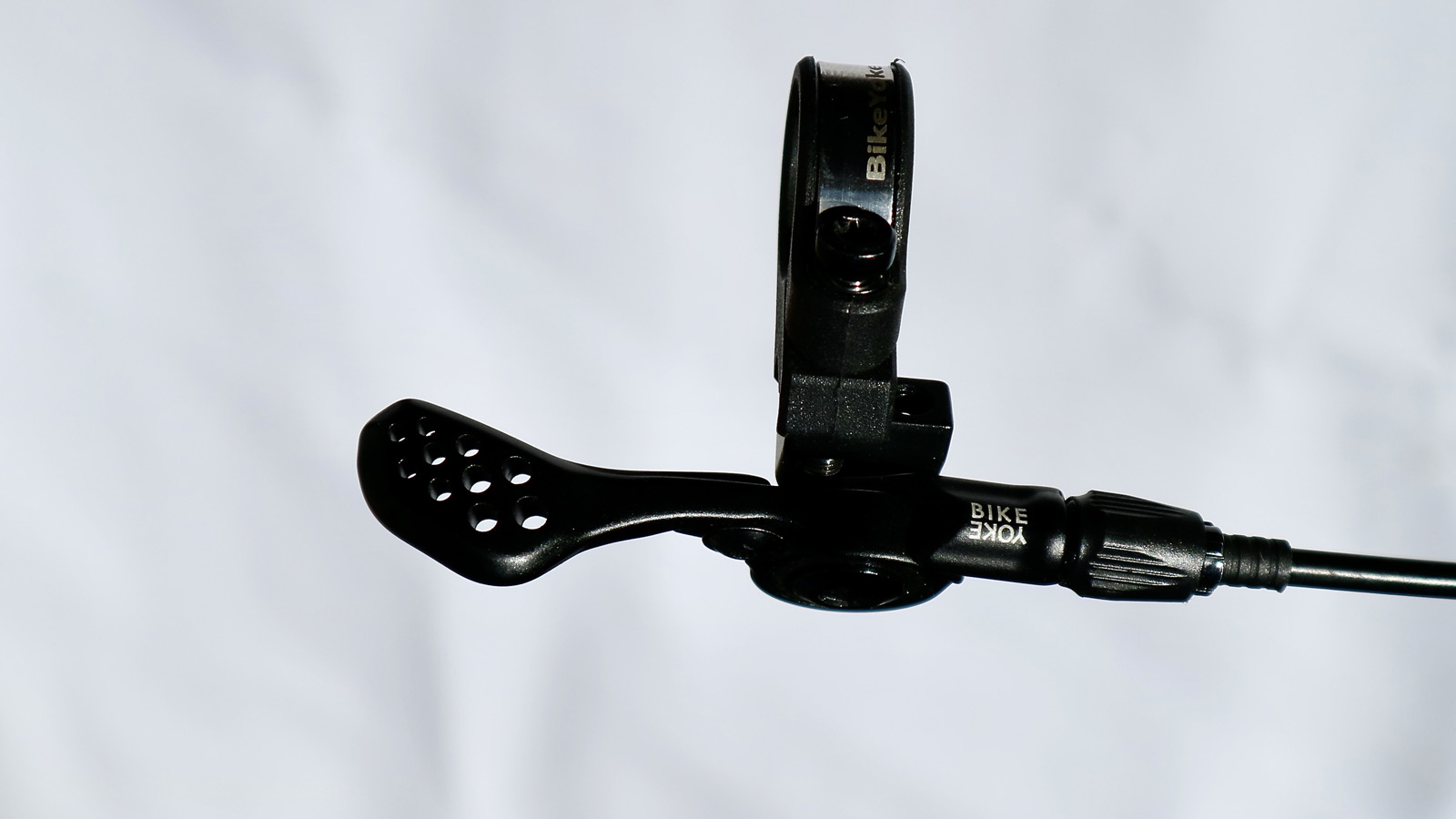
The Triggy has a really light action but without any excessive throw; a short press of the lever is all that’s needed to drop this post. Return rate is pretty snappy but if you want to really speed it up you can add more air via a Schrader valve under the saddle clamps – there’s even a pump adapter included in the box to do this.
Verdict
You’d expect flawless build quality for this money but what makes this BikeYoke Revive stand out from the crowd is the smooth action and low stack height. You’re literally getting more drop for your money because you can squeeze a longer dropper into a smaller space.
Tech Specs: BikeYoke Revive 2.0 160 dropper post
Price: Post $350 / £340 / €350; Triggy remote $64.99 / £45 / €45; Split clamp $TBC / £10 / €6
Travel: 125mm, 160mm, 185mm, and 213mm
Sizes: 30.9 and 31.6mm
Weight: Post 514g (30.9 x 160mm); Remote 46g
Rival products: Fox Transfer Factory, Crankbrothers HighLine 3, RockShox Reverb AXS
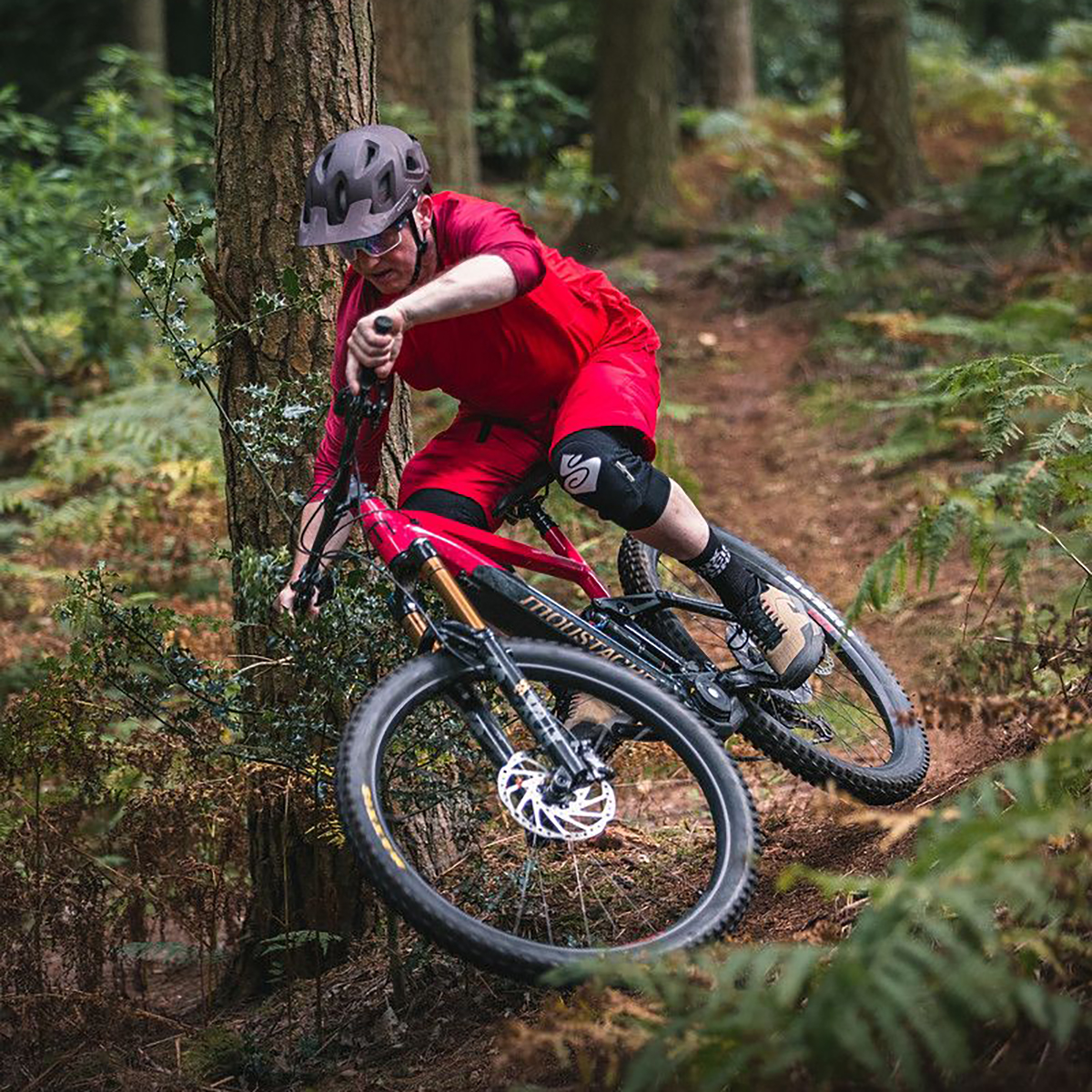
Paul has been testing mountain bikes and products for the best part of 30 years, he’s passed comment on thousands of components and bikes, from the very first 29ers and dropper posts to latest e-MTBs and electronic drivetrains. He first put pen to paper for Mountain Bike International magazine but then contributed to What Mountain Bike, Cycling Today and Cycling Weekly magazines before a 20 year stint at MBR magazine. An ex-elite level XC racer, he’s broken more bones than records but is now sustained on a diet of trail building, skills coaching and e-bike trail shredding.
